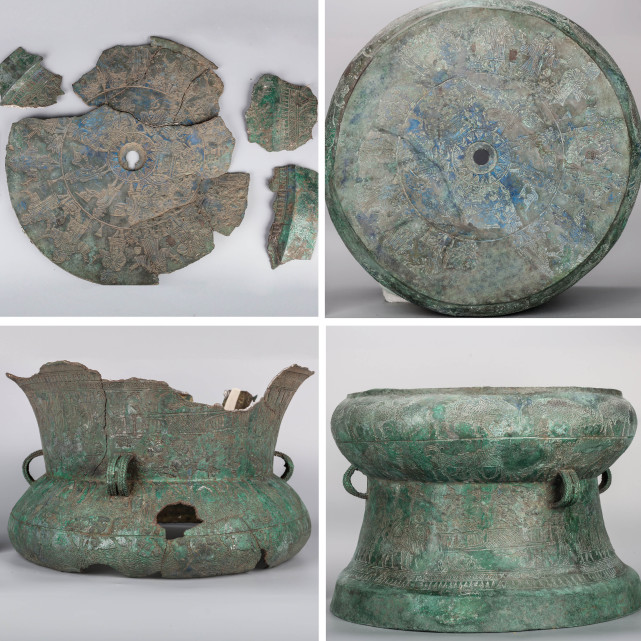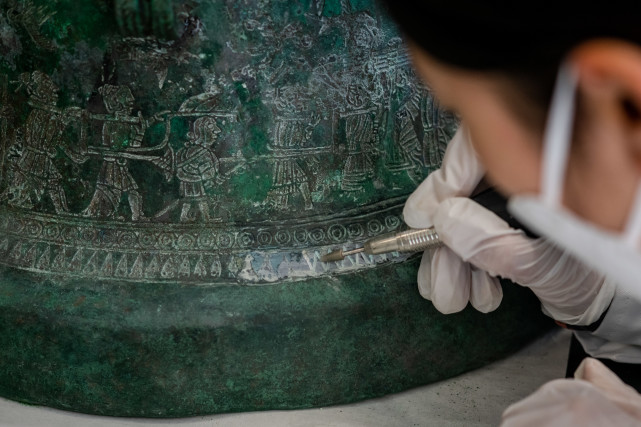

A money pot might carry a sweet childhood memory for some. But as early as 2,000 years ago, in today's Yunnan Province of southwest China, it means wealth, status, and power.
But it was not a piggy bank, and what was stored inside were not coins either. In the ancient Dian Kingdom, this bronzeware held precious seashells from the Indian Ocean, an exclusive item for aristocrats.
According to historical records and archaeological studies, most areas in Yunnan were still in a barter stage at that time, and shells were not popular as a currency but in nobles' tombs for symbolic use.
These "shell containers" presented the advanced productivity and aesthetic level in that period. Their most unique part is the exquisite cover with three-dimensional reliefs, indicating vivid scenes of social life in the ancient Dian Kingdom, including sacrifice, war, and tribute hunting and weaving.
People in the Kingdom did not develop systematically-formed words to record history, so the shell containers became the "truest and most intuitive material" for studying the civilization of the ancient Dian Kingdom, said Fan Haitao, deputy curator of the Yunnan Provincial Museum.
Lu Jingjie, a cultural relics restorer who has been a bronzeware restorer for more than two decades, said bronzes mostly have breakages, remnants, deficiencies, rust, and cracks.
Many steps should be taken when restoring bronzes, such as soil cleaning, de-rusting, bonding, and color-filling. The restoration work is so delicate that dental instruments are often used, said Lu.
"We pay so much attention to them to prolong the life of cultural relics and let more people know about this history," he said.
Preserving them properly for a long time is a more pertinent issue.

Pan Jiao, deputy director of the cultural relics protection center of the museum, said since 2017, to protect cultural relics, the museum has installed a small white box, which is a wireless sensor environmental monitoring terminal, in every glass showcase.
It is used to monitor the environmental temperature and humidity, organic volatiles, and ultraviolet rays. In addition, the museum has also installed isolation platforms for vulnerable cultural relics.
To let more people know about the bronze culture of the ancient Dian Kingdom, the Yunnan Provincial Museum has launched online classes to popularize knowledge of the collections in the museum among children.
Ye Zhisheng, deputy director of the information and imaging department of Yunnan Provincial Museum, said during the epidemic, the museum is still publishing online manual classes every week, teaching children to make paper products with images of animals on shellfish containers and other relics. So far, the video clips online have raked in over one million views.
"It is our responsibility to pay attention to cultivating children's interests in cultural relics and history. The concept of cultural-relic protection needs to pass down from generation to generation," said Ye.